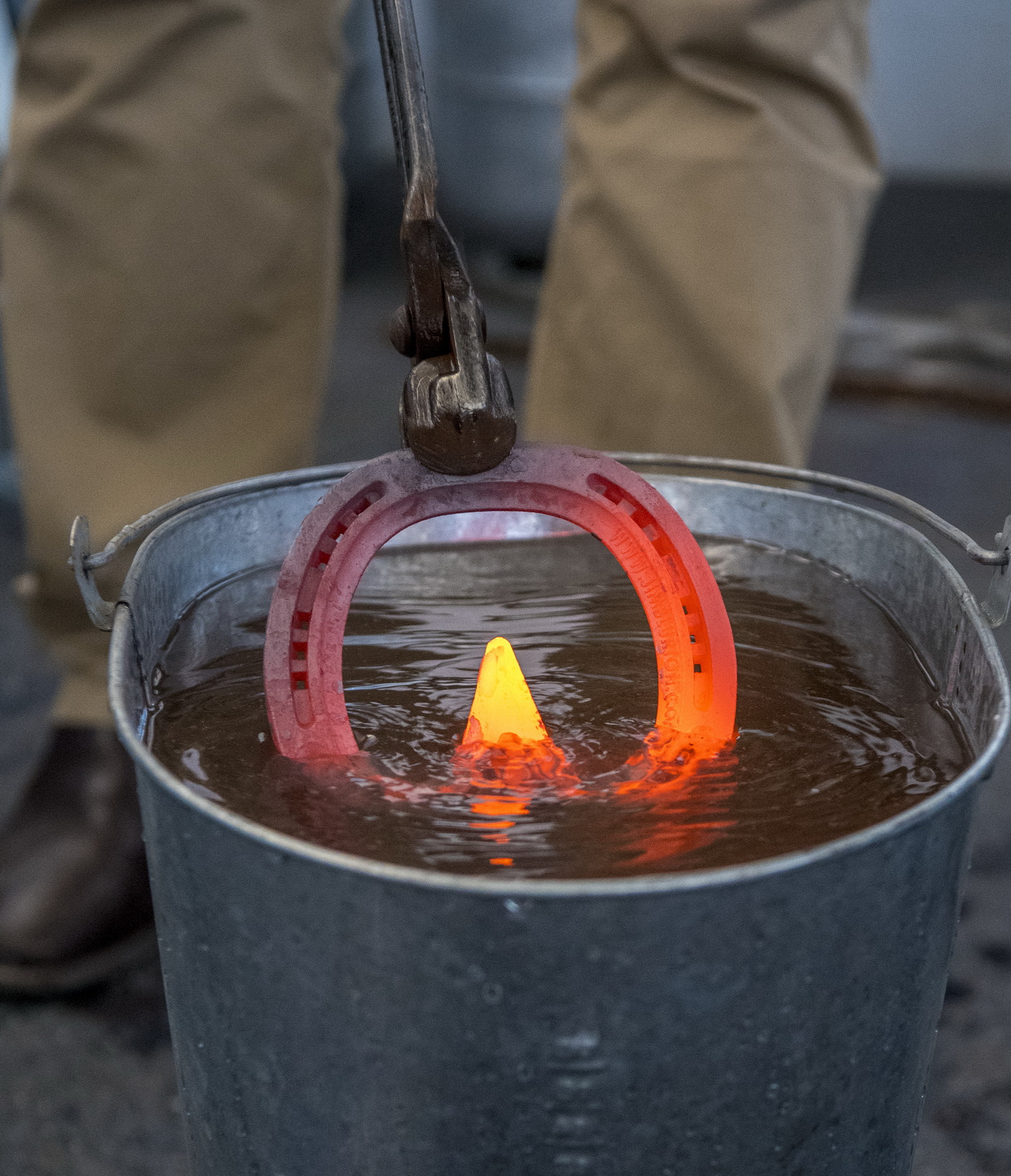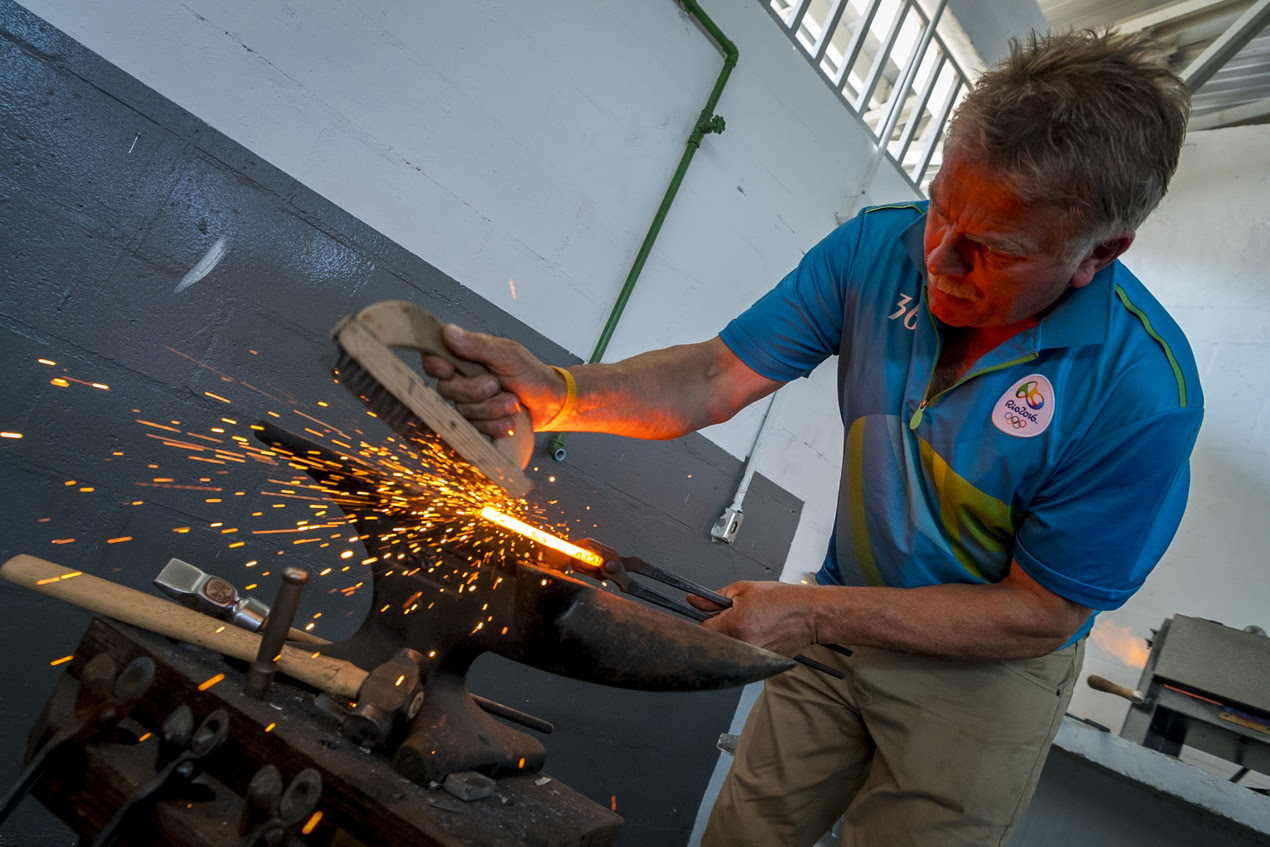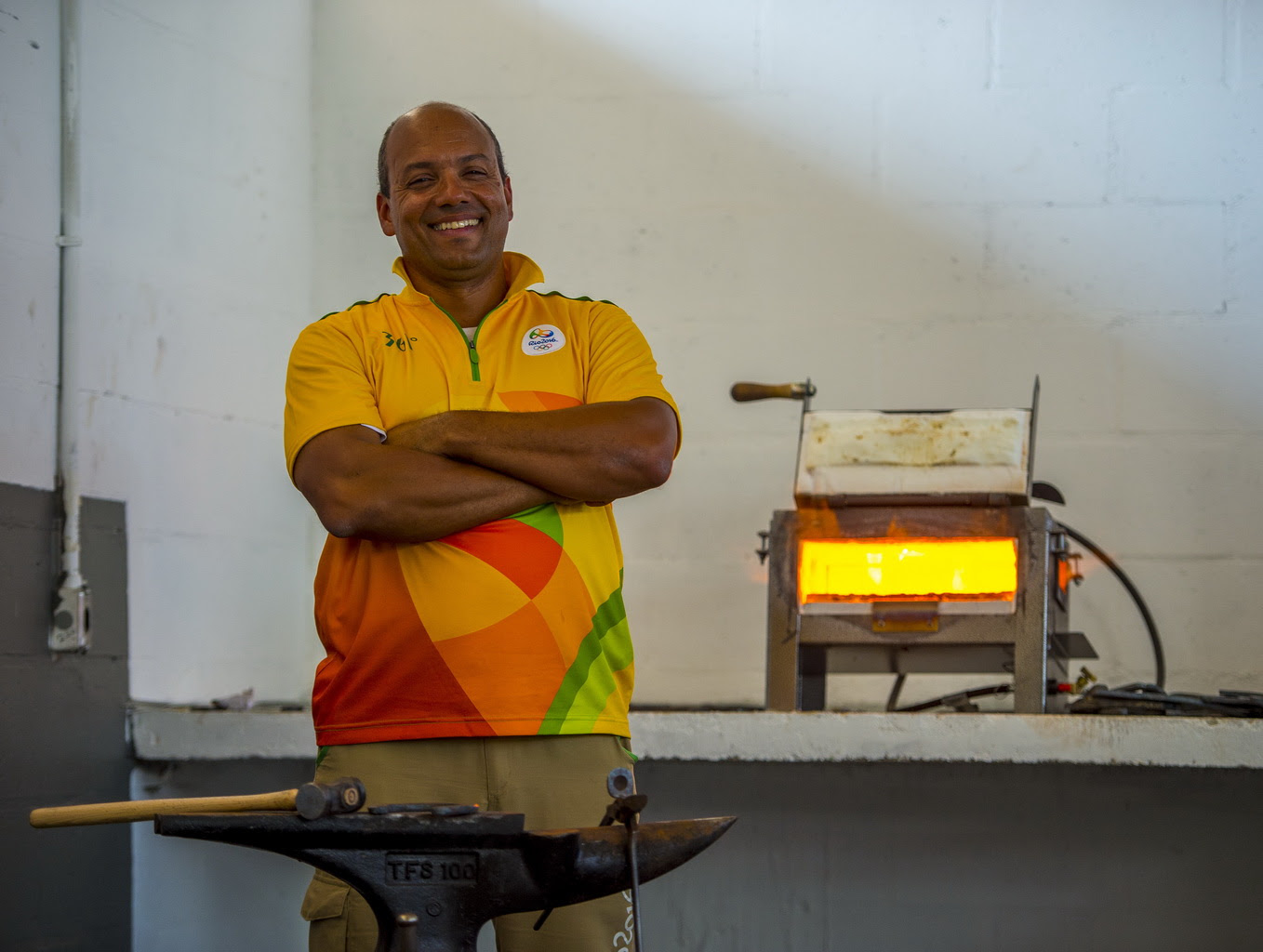These are shoes with a variety of styles: flat shoes, tapered shoes, heart-bar shoes that encase the entire foot, and shoes with studs for grip. And some even come with gel pads for cushioned comfort.
There’s no tying laces for these athletes. Their shoes, which are made of either iron or aluminium, are nailed on.
To achieve the ultimate equine fit, the shoe is heated to a red-hot 800 degrees before being forged on the anvil to the correct shape. When the temperature of the shoe has dropped, it’s pressed onto the foot and, once the fit is optimal, the shoe is quenched in a bucket of water to cool it down. Then it’s nailed onto the insensitive hoof, the equivalent of a 10mm thick toenail. A pedicure and shoe-fitting in one package!
There’s also a glue-on aluminium option, using a special glue that sets in two minutes. This requires fast, accurate work and is a really specialised job. One of the horses that was re-shod by the Olympic farriery team using this method went on to win gold!
And then there are apparently decorative effects that actually play an important role, like copper-coated anti-microbial nails which tackle the equine equivalent of athlete’s foot.
Just like track and field athletes or footballers, when grip is crucial, studded shoes are the only answer. And for horses, there’s a huge variety of different lengths and shapes of studs for different ground conditions. According to the Rio 2016 Lead Farrier Jim Blurton,
“Stud selection is nearly as important as tyre selection for Formula 1”.










